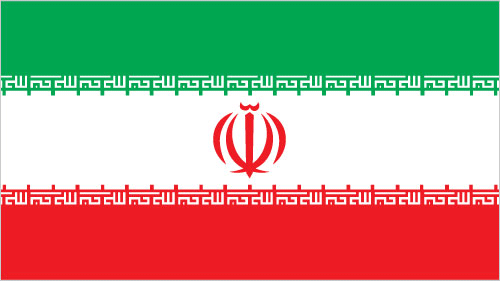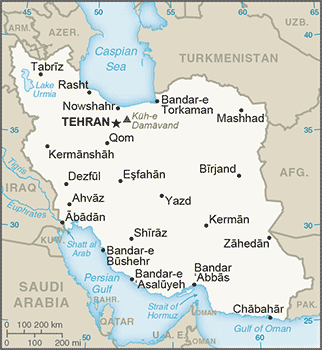Importing from Iran


Iran Country Profile
Official Name (Local Language) Jomhuri-ye Eslami-ye Iran
Capital Tehran
Population 82,801,633
Currency Iranian Rial
GDP $412.3 billion
Languages Persian
Phone Dial In 98
Iran Exports Profile
Exports ($m USD) 130,544
Number of Export Products 2,452
Number of Export Partners 149

Iran Economic Statistics
Government Website | https://www.president.ir/en/ |
| Sovereign Ratings | https://countryeconomy.com/ratings/iran |
| Central Bank | The Central Bank of Iran |
| Currency USD Exchange Rate | 30,462.1 |
| Unemployment Rate | 10.7% |
| Population below poverty line | 18.7 |
| Inflation Rate | 8% |
| Prime Lending Rate | NA |
| GDP | $412.3 billion |
| GDP Pro Capita (PPP) | $18,100 |
| Currency Name | Iranian Rial |
| Currency Code | IRR |
| World Bank Classification | Upper Middle Income |
| Competitive Industrial Performance | 76/138 |
| Corruption Perceptions Index | 130/180 |
| Ease of Doing Business | 128/190 |
| Enabling Trade Index | 132/136 |
Access trade, receivables and supply chain finance
We assist companies to access trade and receivables finance through our relationships with 270+ banks, funds and alternative finance houses.
Get StartedImporting from Iran
Iran’s most important exports are raw metals, ethylene polymers (a type of plastic), and chemicals like acyclic alcohols and fertilisers. Iran is an important member of OPEC, and is the 9th largest oil producer in the world, with the world’s 3rd largest crude oil reserves. Its main import sources are China, India, and neighbours Turkey and Kuwait. Iran is one of the most populous countries in the Middle East, with a stable and resilient economy that is boosted by but not reliant on oil growth.
Iran is subject to expansive sanctions by the EU, UK, and US due to its refusal to halt its uranium enrichment program and, more recently, for supporting Russia in its war against Ukraine. The sanctions prohibit trade with specific individuals and entities as well as in entire industries or classes of products. Iran is also one of only 3 countries on the Financial Action Task Force blacklist, a list of countries the international body deems “non-cooperative” in the fight against money laundering and terrorist financing.
Internally, Iran is a partially democratic country with regular elections for a president and parliament who work under the control of an unelected supreme leader. While the political situation is stable, frequent unrest and protest movements can be disruptive and lead to instability. Iran is close with Iraq politically and largely reliant on China as an export market, as well as Chinese investments. If there was further instability in the Middle East, or an external shock impacting the Chinese economy or oil prices, Iran would bear much of the brunt. Conversely, if sanctions were lifted because of a decrease in tensions, Iran could become an incredibly attractive trading partner for much of the West and its economy would flourish.
Importing from Iran: What is trade finance?
Trade finance is a revolving facility in which lenders offer financing options – it enables businesses to purchase products and can help ease the pressure from working capital issues.
Generally, an export finance bank will fund up to 100% of the cost of the products, including charges (e.g. insurance costs).
Trade finance offers upsides over more traditional bank financing, for example bridging mortgages or loans. Trade finance provides quick funding without affecting existing bank relationships.
How does it work?
If you’re a business importing or exporting goods around the world, then a trade finance facility would assist your company through offering a letter of credit (LC) or some form of cash advance.
I’m looking to import from Iran, how can Trade Finance Global help, and how does it work?
If you’re looking to import inventory from other countries, you may require import finance, which is an agreement between yourself (the importer) and the foreign exporter. A non-bank lender will act as the intermediary, paying the foreign exporter on your behalf until you get the products and have then sold them to your buyer. Repaying the financier then occurs over an agreed period of time.
Chart Showing GDP Growth Compared to rest of world
GDP Composition for Iran
Agriculture
9.1%
Wheat, rice, other grains, sugar beets, sugarcane, fruits, nuts, cotton; dairy products, wool; caviar
Industry
39.9%
Petroleum, petrochemicals, gas, fertilizers, caustic soda, textiles, cement and other construction materials, food processing (particularly sugar refining and vegetable oil
Services
51%
Map
Top 5 Exports Partners
| Country | Trade | % Partner Share |
| Other Asia, nes | 61,361 | 47.00 |
| Unspecified | 38,199 | 29.26 |
| China | 5,287 | 4.05 |
| Iraq | 4,647 | 3.56 |
| United Arab Emirates | 4,270 | 3.27 |
Top 5 Exports Products
| Export Product | Number |
| Petroleum oils, etc, (excl. crude); preparation | 7.5% |
| Coniferous wood sawn or chipped lengthwise, sli | 6.3% |
| Multi-ply paper and paperboard, coated… | 4.1% |
| Semi-bleached or bleached coniferous chemical w | 3.6% |
| Automobiles with reciprocating piston engine di | 3.0% |
Local Partners
- All Topics
- Iran Trade Resources
- Export Finance & ECA Topics
- Local Conferences



















